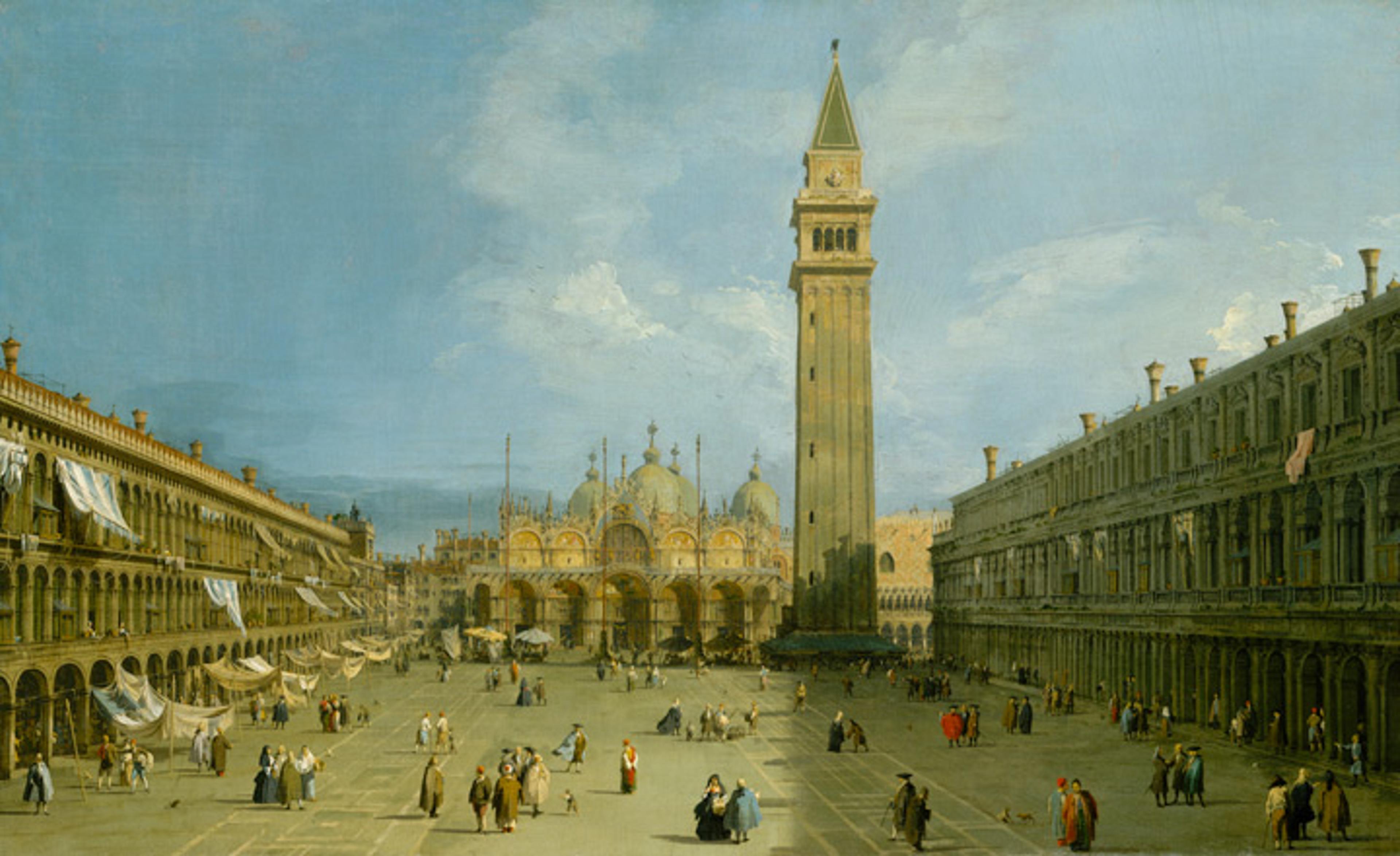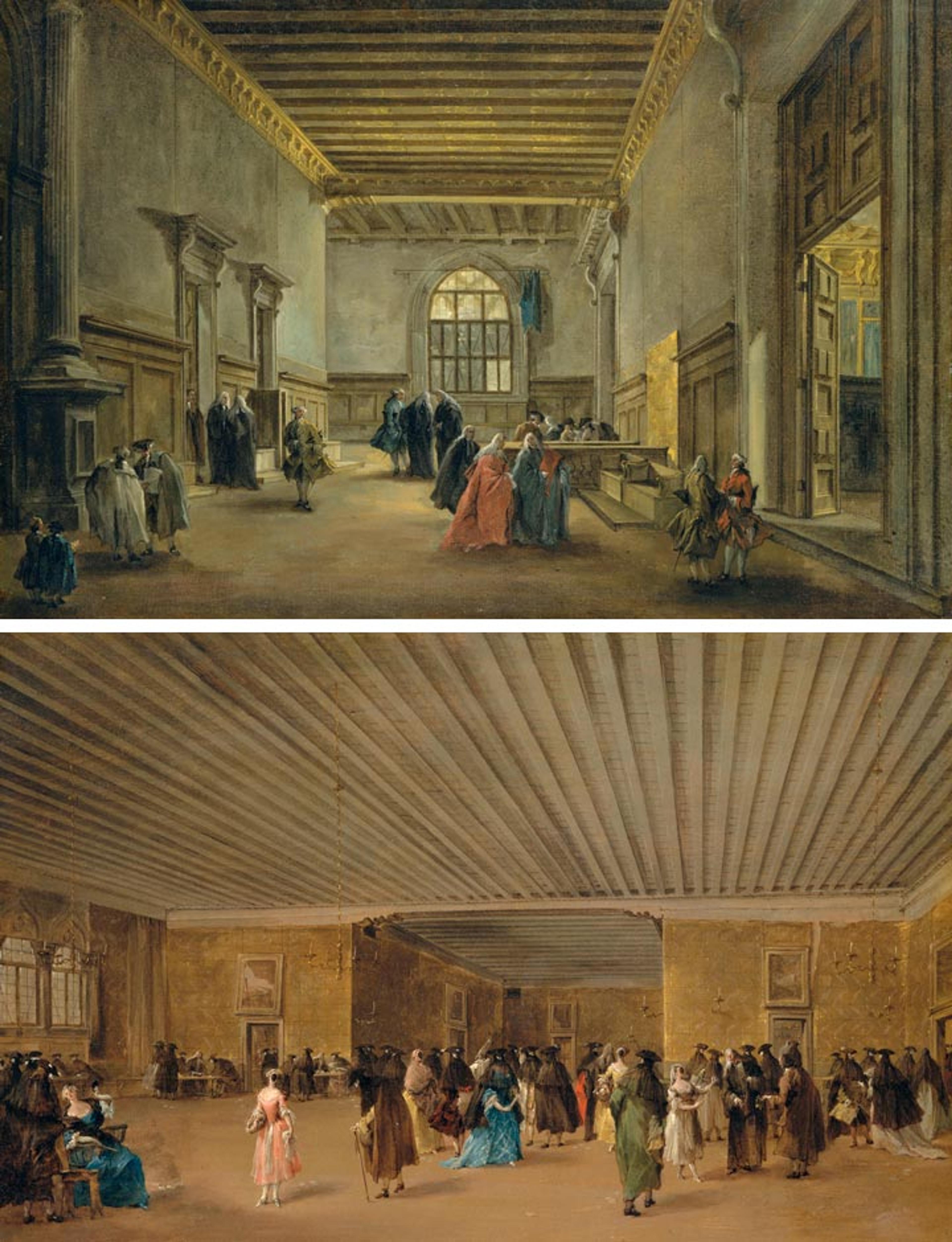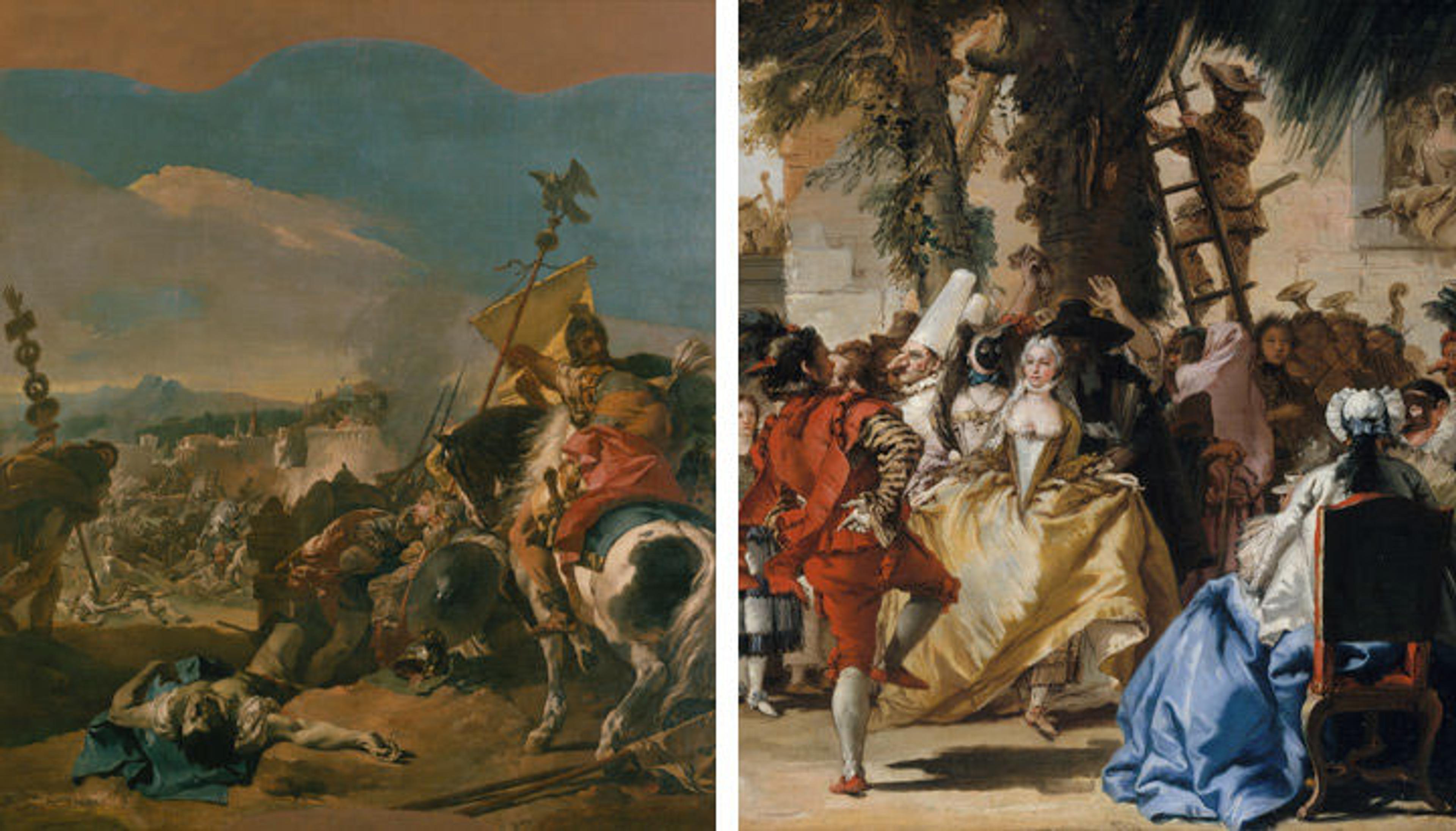La Serenissima: Venetian Glory in The Met's Galleries

Canaletto (Giovanni Antonio Canal) (Italian, 1697–1768). Piazza San Marco, late 1720s. Oil on canvas, 27 x 44 3/4 in. (68.6 x 112.4 cm). The Metropolitan Museum of Art, New York, Purchase, Mrs. Charles Wrightsman Gift, 1988 (1988.162)
«This February The Met is delighted to celebrate Venice—La Serenissima—alongside so many of New York's great cultural institutions. In collaboration with Carnegie Hall's La Serenissima: Festival of Music and Arts from the Venetian Republic, the Museum will participate by hosting a series of talks on February 9 and 16, Celebrating La Serenissima, which will take up subjects fundamental to understanding the city: the art of its golden age in the 16th century, and the pleasures that it offered travelers during the time of the Grand Tour two centuries later.»
The Museum offers access to some of the greatest Venetian treasures on a daily basis through its unparalleled collection. Visitors can find these across many of our curatorial departments—Medieval Art, Drawings and Prints, European Sculpture and Decorative Arts—but in this post, I will concentrate on the rich collection of paintings that have arrived in our galleries thanks to generations of New York collectors who have long been drawn to the magnificent canvases of artists ranging from Giovanni Bellini to Giambattista Tiepolo. In fact, enthusiasm for the great 18th-century genius Tiepolo has resulted in New York having the largest collections of his works outside of Venice itself.
Henry James noted in his 1909 book of travel writing, Italian Hours, that it was best to see Venetian art in Venice, but that in other places (he mentions Paris and the National Gallery in London), one could come in from a grey day and imagine floating on the lagoon near the Ducal Palace just by gazing at a glowing painting by Veronese. You can experience a similar sensation in our Venetian galleries, and I hope that looking at the images gathered in this post will provide something of the same experience.

Clockwise from left: Paolo Veronese (Paolo Caliari) (Italian, 1528–1588). Mars and Venus United by Love (detail), 1570s. Oil on canvas, 81 x 63 3/8 in. (205.7 x 161 cm). The Metropolitan Museum of Art, New York, John Stewart Kennedy Fund, 1910 (10.189). Lorenzo Lotto (Italian, 1480–1556). Venus and Cupid. Oil on canvas, 36 3/8 x 43 7/8 in. (92.4 x 111.4 cm). The Metropolitan Museum of Art, New York, Purchase, Mrs. Charles Wrightsman Gift, in honor of Marietta Tree, 1986 (1986.138). Titian (Tiziano Vecellio) (Italian, ca. 1585/90–1576). Venus and Adonis. Oil on canvas, 42 x 52 1/2 in. (106.7 x 133.4 cm). The Metropolitan Museum of Art, New York, The Jules Bache Collection, 1949 (49.7.16)
I draw your attention to this group of three paintings from the 16th century: works by Titian, Veronese, and Lorenzo Lotto. All three are about love, and in each work the artist delves into mythological tales and paints them with brilliant color and feeling. Titian tells the tragic story of the impending separation between Venus and her mortal lover Adonis, who is doomed, as Venus foresees, to be killed by wild animals (as told in Ovid's Metamorphoses). Veronese shows us Venus as well, but now paired with the god Mars as her lover. The god's warlike temperament has been laid aside, his helmet at his feet and his horse restrained, as Cupid ties the two in a harmonious unity that brings together opposites. Lotto's Venus is perhaps the most enticing, presenting Venus as the goddess of marriage with her bridal tiara and veil, auguring the fertility of the couple—hence the urinating Cupid!

Top: Francesco Guardi (Italian, 1712–1793). The Antechamber of the Sala del Maggior Consiglio, ca. 1765–68. Oil on canvas, 13 3/8 x 20 in. (34 x 50.8 cm). The Metropolitan Museum of Art, New York, Bequest of Lore Heinemann, in memory of her husband, Dr. Rudolf J. Heinemann, 1996 (1997.117.4). Bottom: Francesco Guardi (Italian, 1712–1793). The Ridotto Pubblico at Palazzo Dandolo, ca. 1765–68. Oil on canvas, 13 3/8 x 20 in. (34 x 50.8 cm). The Metropolitan Museum of Art, New York, Bequest of Lore Heinemann, in memory of her husband, Dr. Rudolf J. Heinemann, 1996 (1997.117.5)
Part of the allure of Venetian painting is the intense feeling for place, for the special qualities of the city, its canals and campi (squares). Canaletto evokes the great Piazza of San Marco (as seen at the top of this post), the intense busyness of the lagoon, but also the dreamy, watery spaces beyond the city itself.
Francesco Guardi also brings us into some of the most famous—and infamous—public spaces of Venice. In the pair of interior scenes above, he shows us people waiting to enter one of the main rooms of the Palazzo Ducale, the Sala del Maggior Consiglio, in which the officials of the state are shown in their voluminous robes. The serious, official atmosphere contrasts strongly with that of the painting's pendant, which shows the first public gambling casino, the so-called ridotto. Here Venetians and visitors alike could lose their fortunes while drinking wine, coffee, tea, and chocolate. Note just how many of the figures wear the carnival masks that hide their identities as they move through seamier Venetian locales.

Left: Giovanni Battista Tiepolo (Italian, 1696–1770). The Capture of Carthage, 1725–29. Oil on canvas, 162 x 148 3/8 in. (411.5 x 376.9 cm). The Metropolitan Museum of Art, New York, Rogers Fund, 1965 (65.183.2). Right: Giovanni Domenico Tiepolo (Italian, 1696–1770). A Dance in the Country (detail), ca. 1755. Oil on canvas, 29 3/4 x 47 1/4 in. (75.6 x 120 cm). The Metropolitan Museum of Art, New York, Gift of Mr. and Mrs. Charles Wrightsman, 1980 (1980.67)
No one transformed the appearance of Venetian interiors more than Giovanni Battista Tiepolo, who dominated the art scene from the 1720s through his departure for Madrid in 1762. He painted pictures on an enormous scale for palaces, such as the decorations for the Ca'Dolfin (the house of the Dolfin family), with its illustrated scenes from Roman history, including the dramatic Capture of Carthage he painted in 1728–29.
Tiepolo went on to compose dazzling ceilings both in Venice and for a roster of major patrons that included Prince-Bishop Carl Philipp von Greiffenclau, whose Residenz in Würzburg was utterly transformed by Tiepolo's Allegory of the Planets and Continents. The Met's modello (oil sketch) for this composition is one of the greatest 18th-century works in the collection.
Tiepolo's son, Giovanni Domenico, was also a gifted artist, who left us some of the most brilliant depictions of contemporary life. In his Dance in the Country, he depicts a troupe of commedia dell'arte performers entertaining at a villa in the countryside outside Venice. It is as if we are sitting just past the hostess, seen from behind, whose flowing blue skirt is a tour de force of painting. Nothing could prepare us better for the performances we can expect to see and hear during the La Serenissima festival!
To purchase tickets to the Celebrating La Serenissima series or any other MetLiveArts event, visit www.metmuseum.org/tickets; call 212-570-3949; or stop by the Great Hall Box Office, open Monday–Saturday, 10:30 am–3:30 pm.
Related Link
82nd and Fifth: "Unfinished" by Andrea Bayer
Andrea Bayer
Appointed the Museum’s Deputy Director for Collections and Administration in October 2018, Andrea Bayer was previously the Jayne Wrightsman Curator in the Department of European Paintings. She received her Ph.D. from Princeton University in 1990, and has been on the staff of The Met since that time.
An expert on Italian Renaissance art, she has worked on a range of exhibitions, both thematic investigations—such as Painters of Reality: The Legacy of Leonardo and Caravaggio in Lombardy (2004) and Art and Love in Renaissance Italy (2008–9)—and monographic shows on artists such as Giambattista Tiepolo, Dosso Dossi, and Antonello da Messina. Her most recent exhibitions include Unfinished: Thoughts Left Visible, one of the inaugural exhibitions at The Met Breuer. She was a curator in European Paintings from 2007 to 2018, and, in 2014, became the Jayne Wrightsman Curator. Outside the department, Bayer served as Interim Deputy Director for Collections and Administration (May–October 2018), Interim Head of Education (2008–9), and for six years was coordinating curator for the Curatorial Studies program run jointly by the Museum and New York University’s Institute of Fine Arts. She is currently co-chairman of the Director’s Exhibition Committee.